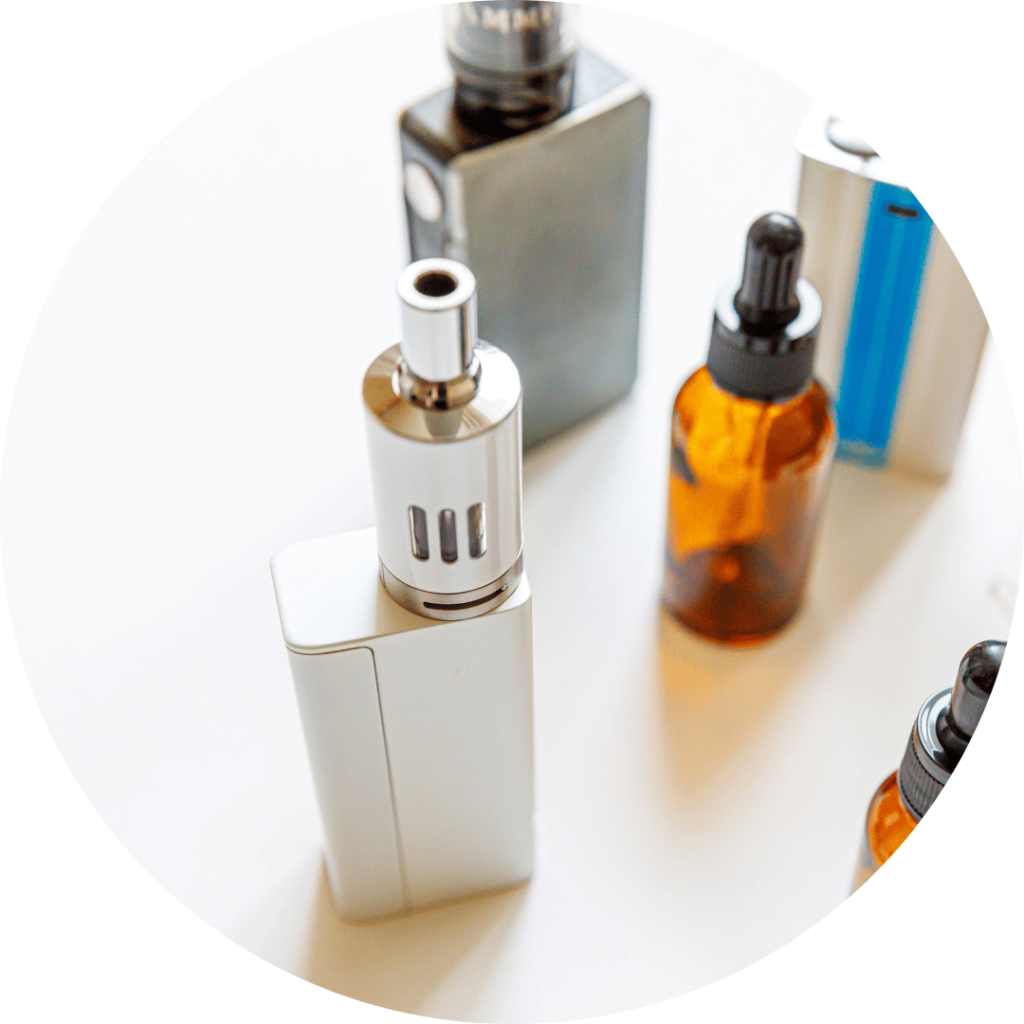Electronic cigarettes, also known as electronic nicotine delivery systems, satisfy a smoker’s craving for nicotine without combustion. Since there is no burning involved, e-cigarette usage (also called “vaping”) produces no tar and no smoke. Electronic cigarettes reduce a user’s exposure to harmful chemicals and, according to the Royal College of Physicians, are about 95% safer than combustible tobacco.
While vaping is dramatically safer than smoking, it is not without risks. E-cigarettes still deliver nicotine, which is not a safe substance. We do not recommend beginning a new nicotine addiction. For individuals with an existing nicotine dependency, we encourage switching to vaping as a healthier alternative to combustible tobacco.


Government and media sources are quick to point out the absolute risks of vaping. Vapers are exposed to nicotine, some level of the chemicals present in combustible tobacco, and even substances not found in combustible tobacco products. Studies have associated vaping with increased potential for heart disease, lung disease, and cancer. However, this is only one-half of the risk assessment.
The other half of the assessment is relative risk, or a comparison of risks between groups of people. As a group, vapers are less likely to experience cancer, heart disease, and respiratory issues than smokers. Even though vapers are more likely to experience these illnesses than non-vapers, it is obvious that lives can be saved when smokers switch to vaping.
Media sources have emphasized the dangers of youth vaping. Many US governmental health organizations, such as the FDA, have denounced vaping to deter youth nicotine usage. Unfortunately, this anti-vaping message has misinformed the public. Nearly half of surveyed Americans believe vaping is equally harmful to smoking, or even more dangerous–despite research demonstrating the opposite.
It is crucial to deter minors from beginning a nicotine addiction, whether by combustible tobacco products or e-cigarettes. It is equally important for nicotine messaging to be accurate about the relative risks of all nicotine delivery systems. Vaping is not risk-free, but it is a significantly safer option for established smokers than combustible tobacco. At the Florida Smoke-Free Association, we discourage all youth nicotine consumption while supporting adult access to vaping products as safer smoking alternatives.
We support packaging and marketing restrictions designed to discourage underage vaping. In line with current federal law, we support states raising the minimum vaping and smoking age to 21 (as Florida has done.) We also encourage the responsible use and storage of vaping products to prevent childhood access to nicotine in any form.

Florida’s vaping industry has a significant economic impact on the state, creating nearly 10,000 jobs, $250,000,000 in state and federal taxes, and $176,000,000 in wages per year, according to the Vapor Technology Association. The industry supports thousands of families and small businesses across the state, with jobs in manufacturing, retail, distribution, and marketing. The industry also supports local communities, with businesses such as vape shops and e-liquid manufacturers bringing jobs and revenue to cities and towns across the state.
For any inquiries, questions or commendations, please fill out the following form below.